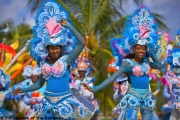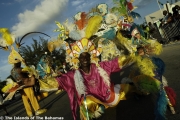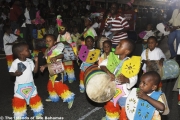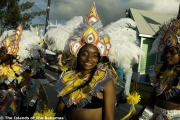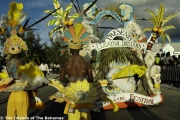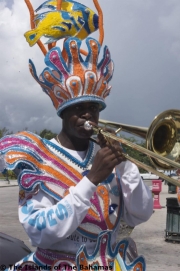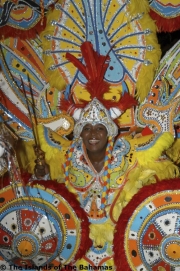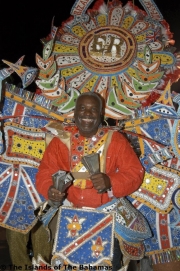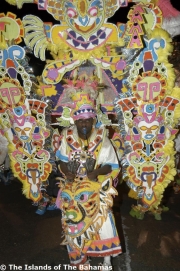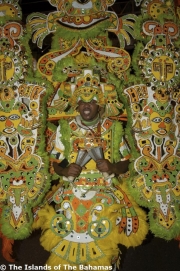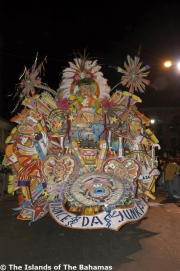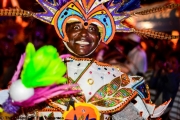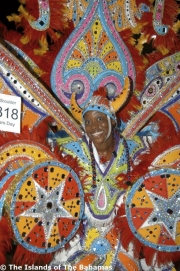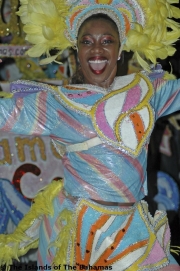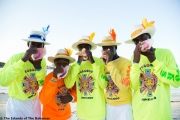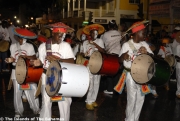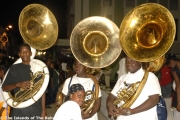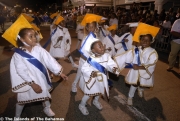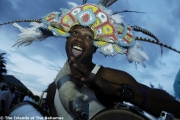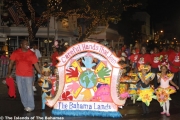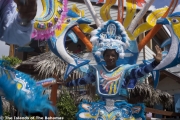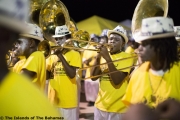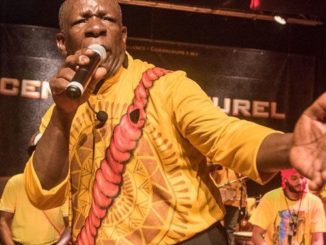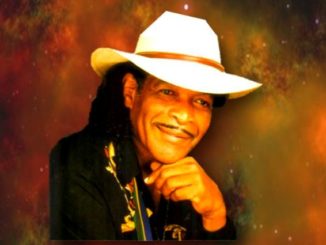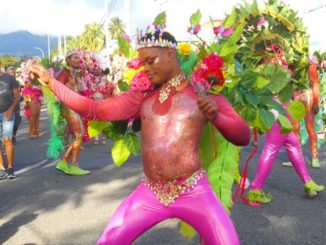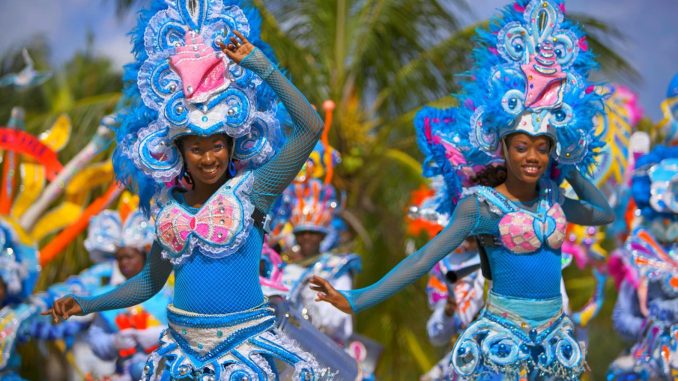
Do you know Junkanoo? The French-speaking Caribbean might think that this is a kind of “Jus de canne” (Sugarcane juice) because of the english pronunciation. The answer is NO. For those who had never heard this word before, this is a famous traditional celebration of The Bahamas dating back to the days of slavery where participants disguise themselves and dance to the sound of drums and other instruments. In short, it’s the Bahamian carnival.
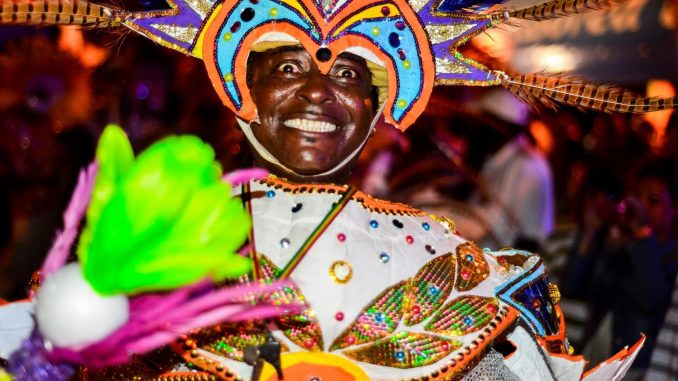
Junkanoo has just ended in The Bahamas, it took place on December 26, 2016 and on January 1, 2017 and gathered, as every year, thousands of people.
In this Bahamas archipelago with a surface area of 260,000 km2 that consists of 700 islands ranging from the coast of Florida to the coast of Haiti, the largest parade is held in the capital, Nassau, on the island of New Providence. Other islands like Grand Bahamas, Eleuthera, Harbor Island, Bihimi, Exumas and Abacos also organize their carnival parades.
There are many explanations about the origin of this Bahamian cultural tradition.
The most popular explanation is that many English Loyalists had colonized these islands in the 18th century and had many African slaves in their service. During the Christmas period, the masters gave to the captives three days off to feast. They took advantage of this rare opportunity to sing, to dance to the rhythm of drums, bells and whistles with very colorful clothes and masks and to go from house to house, usually on stilts. The celebration took place twice a year, the day after Christmas and New Year’s Day. It usually began by night at 2 o’clock in the morning and ended at 3 o’clock in the afternoon, the following day.
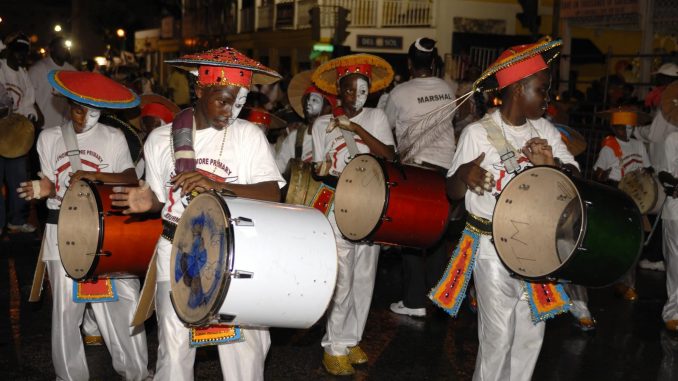
Speculations about the origin
For some people, this holiday was established by John Canoe, a Prince from West Africa who fought the English slavers and then became a local hero.
For others, “Junkanoo” derives from the French words “Gens inconnus” (Unknown people) because the face of the slaves in disguise could not be seen.
The speculations are diverse and varied but what is certain is that the Junkanoo was born during slavery, several centuries ago (in the 16th century or the 18th century) and was created to entertain the slaves, to let their creativity speak after months of hard work.
After the abolition of slavery in 1834, it tended to disappear but defenders of tradition protected this ancestral festival.
Today, the Bahamas carnival – Junkanoo – attracts thousands of people, Bahamians and tourists.
The parades invade the streets between 2 am and 10 am in front of a crowd of fans and spectators ; they stand along the roadside, they settle down in trees, sit on seats, or lean on balconies to take part in the popular jubilation.
Musical instruments did not change a lot and they resonate as in the time of slavery. There are goatskin drums, horns, bugles, whistles and bells.
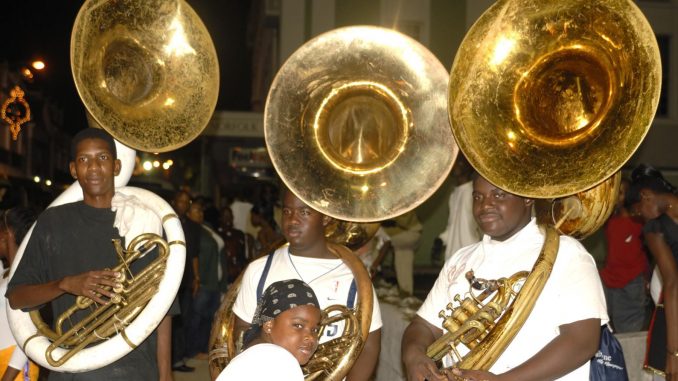
A real popular jubilation
Groups can have up to 1,000 members who are all dressed in beautiful costumes made partly with some nice colored crepe paper and cardboard. It took months of preparation to achieve this, so that all Bahamians share this moment together without distinction as to social classes.
At the end of the parades, judges give cash prizes for the “Best Music Award”, “Best Costume Award” and “Group with Best Presentation Award”.
However, before the “Junkanoo for adults”, there is the “Junior Junkanoo” open to children of all private and public schools of the archipelago, from kindergarten to high school. After the parade, the best group in each category receives a reward.
This event was set up in order to help youth to develop the spirit of social cohesion, self-esteem, patriotism, self-confidence. According to the organizers, when young people participate in this carnival, this allows them to discover their talents and to become later professional artists (singers, dancers, musicians etc.). In addition, the “Junior Junkanoo” is considered as a kind of “nursery” to ensure the continuity of the tradition.
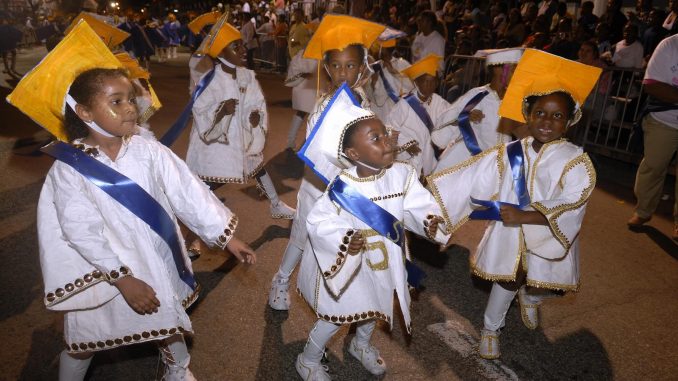
Tourist Junkanoo
The popularity of the traditional Junkanoo was so great that the Ministry of Tourism of the Bahamas decided to organize the “Summer Junkanoo”.
This event which takes place during the months of June and July also aims to enhance the Bahamian culture and heritage. On this occasion, there is a parade for children and a parade for adults.
This Junkanoo carnival is a tourism product for attracting foreign visitors and developping the local economy. Outside this period, Junkanoo can also be celebrated on special occasions where it is necessary to show the cultural heritage of the archipelago.
Moreover, scenes of Junkanoo can be seen in some Hollywood movies such as “Thunderball” with Sean Connery, released in 1965 and “After the Sunset” with Pierce Brosman, came out in 2005, which contributed to promote this festival abroad.
Like other Caribbean carnivals, this festival has been exported. Americans native of the Bahamas who live in Florida organize their Junkanoo in cities like Miami in June and Key West in October.

